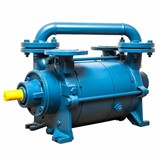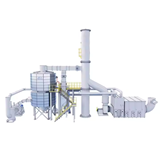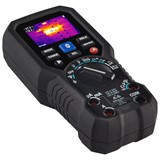1. Understanding Thermal Resolution
Thermal resolution refers to the number of pixels in the thermal image. Higher thermal resolution provides more detailed images and better accuracy in temperature measurements.
A higher resolution means the camera can capture more temperature data, leading to better image quality and precise temperature readings. This is especially important for professionals who need to detect small temperature differences accurately.
2. Importance of Thermal Sensitivity
Thermal sensitivity determines the camera's ability to detect small temperature differences. Lower sensitivity allows for detecting subtle changes, which is crucial in certain applications like electrical inspections.
A camera with high sensitivity can detect even minor temperature variations, making it suitable for detecting hidden faults or anomalies in equipment and machinery.
3. Balancing Resolution and Sensitivity
Consider the balance between thermal resolution and sensitivity based on your specific needs and budget.
If you require fine details and accurate temperature measurements, prioritize higher resolution and sensitivity. However, if your application doesn't demand extreme precision, a camera with a slightly lower resolution may still provide satisfactory results while being more cost-effective.
Identifying Key Features Essential for Your Specific Applications
1. Temperature Range
Ensure that the camera's temperature range covers the minimum and maximum temperatures you expect to encounter during your tasks.
For electrical inspections, where components can reach high temperatures during malfunctions, choose a camera with a wide temperature range. On the other hand, if you primarily work in moderate environments, a camera with a narrower range may be sufficient.
2. Image Modes
Different cameras offer various image modes, such as white hot, black hot, rainbow, and ironbow, allowing you to choose the one that best suits your preferences and requirements.
Image modes affect the way thermal data is visualized on the screen. For example, white hot mode displays hotter areas as white, while black hot mode shows them as black. Choosing the right image mode can enhance the visibility of specific details in different scenarios.
3. Digital Zoom and Image Enhancement
Digital zoom and image enhancement features can help you magnify and improve the quality of captured images for better analysis.
Digital zoom allows you to focus on specific areas of interest, while image enhancement algorithms can optimize image quality and contrast, enhancing the visibility of temperature variations.
4. Image and Video Recording
The ability to record images and videos can be valuable for documentation and further analysis.
Recording capabilities are useful for capturing thermal data during inspections, allowing you to review the information later or share it with colleagues or clients for collaborative decision-making.
5. Real-Time Streaming
For applications requiring live monitoring or sharing of thermal data, real-time streaming capabilities are essential.
Real-time streaming allows you to transmit thermal data to a connected device, such as a smartphone or computer, enabling remote collaboration or monitoring.
Budgeting Considerations and Finding the Best Value for Your Investment
1. Setting Your Budget
Identify the amount you are willing to spend on a thermal imaging camera and the features you prioritize.
When setting your budget, consider the cost of the camera as well as any additional accessories or software you may need. Allocate funds based on the importance of features to your specific application.
2. Value for Money
Evaluate each camera's features, performance, and brand reputation to determine which one offers the best value for your investment.
While a higher-priced camera may offer advanced features and superior performance, it may not always be necessary for your specific needs. Look for cameras that strike the right balance between essential features and budget considerations.
Ensuring Adequate After-Sales Support and Warranty Options for Thermal Imaging Cameras
1. Understanding Warranty Coverage
Review the warranty coverage offered by each brand and model, including the duration and what it covers.
A comprehensive warranty can provide reassurance that the camera is protected against manufacturing defects and malfunctions. Check for warranties that cover an extended period to safeguard your investment.
2. Customer Support
Look for reviews and feedback regarding the customer support provided by each brand.
Prompt and reliable customer support is vital in case you encounter technical issues or require assistance with the camera's operation. Brands known for their excellent customer service can offer peace of mind throughout your ownership of the thermal imaging camera.
In conclusion, when assessing the appropriate thermal resolution and sensitivity requirements for a thermal imaging camera, it's crucial to strike a balance between the level of detail you need and the camera's ability to detect temperature differences accurately. Opting for higher thermal resolution can provide more detailed images and precise temperature measurements, making it advantageous for applications that demand accuracy in detecting small temperature variations. Similarly, thermal sensitivity plays a significant role in detecting subtle changes in temperature, especially for tasks like electrical inspections where identifying hidden faults is essential.





-160x160-state_article-rel-cat.png)














